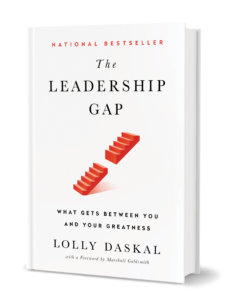A recent survey showed that 39 percent of Americans have forgotten or misplaced at least one everyday item in the past week.
Those of us who are of a certain age may jokingly refer to memory lapses as “senior moments,” but a Trending Machine national poll tells a different story: Millennials between 18 and 34 are significantly more likely than their elders 55 or older to forget what day it is (15 vs. 7 percent), lose their keys (14 vs. 8 percent), forget to bring their lunch (9 vs. 3 percent) or even forget to take a bath or shower (6 vs. 2 percent).
In an age when more and more of us–of all generations–fight information overload and rely on our phones and laptops to remember things we used to entrust to our brains, a great memory is an impressive advantage. But like all skills, it has to be developed. Here are some helpful techniques:
1. Pay Attention. The best way to improve your memory is still to simply pay attention. When you space out or let your mind wander, you fail to form functional memories, and you’ll likely have a problem retrieving the information. The more you pay attention, the more you can retain.
2. Picture it. Generate an image for what you need to remember or anchor it in a symbol. A big part of memory is visual, so an image gives you a better chance of being able to recall something.
3. Repeat and Repeat. Repeat what you want to remember in your mind over and over again. This works well for locations, people and inanimate objects. Keep
repeating until it is implanted in your memory.
4. Discover the why. Think about the “why” of what you are trying to learn. Connecting it to a purpose makes anything more memorable.
5. List it. Write a list of the things you want to remember. The act of categorizing and organizing your thoughts makes them easier to remember, and some studies show that the physical act of writing something down–but not keyboarding it–helps reinforce it in your mind.
6. Form associations. Forming associations is a proven old trick for improving your memory. “Susan lives on Clinton Street” becomes “Susan lives on a street with the name of a saxophone-playing former president.”
7. Break it down. Short-term memory is thought to hold a limited number of items. Work with that limitation by breaking down complex information, especially numbers, into smaller bits. This is why phone numbers are divided; it’s much easier to remember 568-987-5432 than 5689875432.
8. Use keywords. Especially if you’re trying to remember a concept or index a number of things, “tag” your memories by developing a list of key words targeted to what you’re working to remember.
9. Teach it. The best way to remember something is to explain it to someone else. Share what you know with a colleague or friend, and you’ll find it easier to recall.
10. Use mnemonics. Patterns of letters, ideas, or associations can greatly assist memory. Almost every field of study makes use of traditional mnemonics. They can take the form of an acronym (like ROY G BIV for the colors of the rainbow) or a rhyme, like “I before E except after C.”
Young or old, we all need to exercise our memory if we want it to stay in shape. Keep it sharp and you’ll make a great impression by having the answer at hand before anybody else has time to pull out their smart phone.
N A T I O N A L B E S T S E L L E R
THE LEADERSHIP GAP
What Gets Between You and Your Greatness
After decades of coaching powerful executives around the world, Lolly Daskal has observed that leaders rise to their positions relying on a specific set of values and traits. But in time, every executive reaches a point when their performance suffers and failure persists. Very few understand why or how to prevent it.
Additional Reading you might enjoy:
- 12 Successful Leadership Principles That Never Grow Old
- A Leadership Manifesto: A Guide To Greatness
- How to Succeed as A New Leader
- 12 of The Most Common Lies Leaders Tell Themselves
- 4 Proven Reasons Why Intuitive Leaders Make Great Leaders
- The One Quality Every Leader Needs To Succeed
- The Deception Trap of Leadership
Photo Credit: Getty Images
